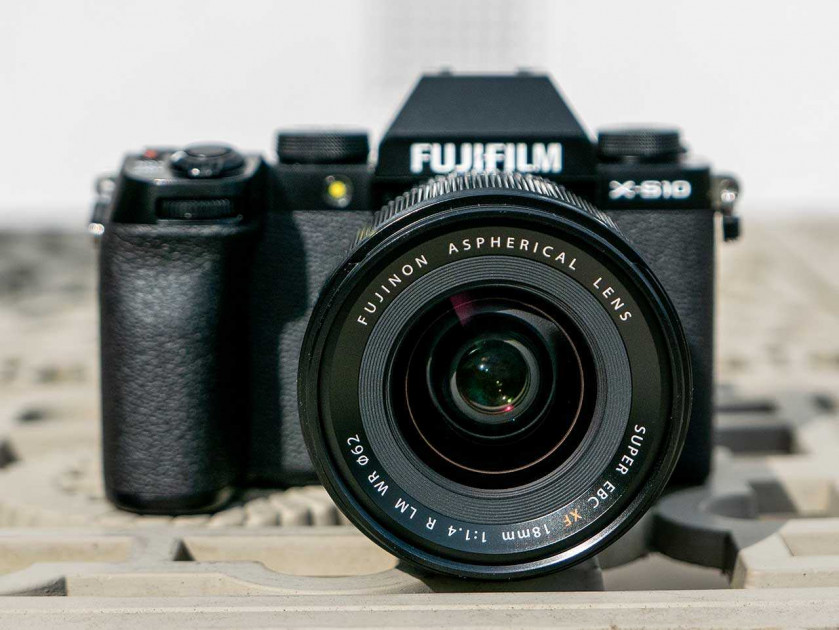Introduction
The Sony FE 14mm F1.8 GM is a new ultra-wide-angle prime lens for the Sony Alpha full-frame mirrorless camera system. It can also be used on Sony APS-C cameras where it provides a 21mm equivalent focal length.
It features 14 elements in 11 groups including two XA (extreme aspherical) elements and one standard aspherical element to help control spherical aberrations, and one Super ED element and two extra-low dispersion elements to help reduce chromatic aberrations and color fringing.
It offers a minimum focusing distance of 25cm / 9.8in with a maximum magnification of 0.1x, has a 9-blade circular aperture which creates an attractive blur to the out-of-focus areas of the image, and features an integrated petal-shaped lens hood.
There’s also a manual aperture ring that can be de-clicked for silent video shooting, a customisable Focus Hold button, updated Nano AR Coating II to eliminate flare and ghosting that is better suited for larger, curved elements, and built-in dust and moisture resistance.
Due to its bulbous front element, this lens includes a rear filter holder within the lens mount that accepts standard sheet-type filters for ND, colour correction, soft filter, etc, rather than using filters mounted on the front of the lens.
The Sony FE 14mm F1.8 GM lens is available now priced at around £1400 / $1600 in the UK and the US, respectively. This lens is made in China.
Ease of Use
Weighing in at 460g / 16.3 oz, the Sony FE 14mm F1.8 GM is very light for an ultra-wide-angle full-frame lens that offers such a fast maximum aperture, and it’s also pretty compact too, measuring 83 x 99.8mm / 3⅜ in x 4 in.
It’s overall size and weight really complements a camera body like the Sony A7R IV that we tested it with, as shown in the photos below.
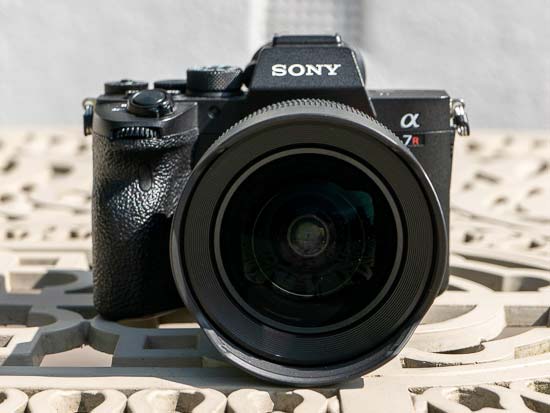
There’s really only one main rival for the new FE 14mm F1.8 lens – the similarly priced Sigma 14mm f/1.8 DG HSM Art that was released back in 2017.
The Sigma 14mm F1.8 is a much larger lens than the Sony 14mm F1.8, though, principally because it’s a DSLR lens that has been repurposed for mirrorless cameras.
The Sony weighs almost 1/3rd of its main rival – 460g vs 1230g – and is a whopping 35% shorter than the Sigma, which measures 152mm in length.
If size and weight are your primary concern, then the Sony is clearly the 14mm lens to choose between the two.
Sony have done so well at creating a small, lightweight 14mm lens that it even beats some 14mm F2.8 lenses in both of these aspects – the Samyang AF 14mm F2.8, for example, is slightly shorter but also slightly heavier than the Sony FE 14mm F1.8 by 40g, despite being a much slower lens.
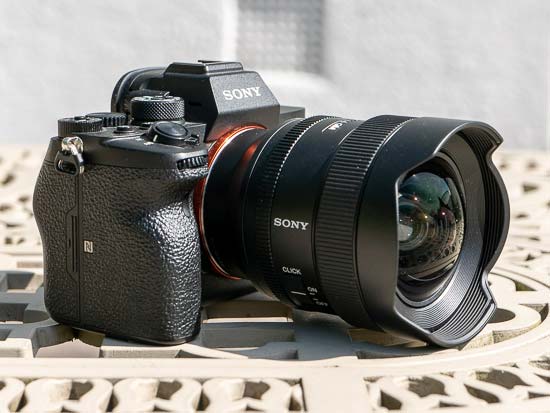
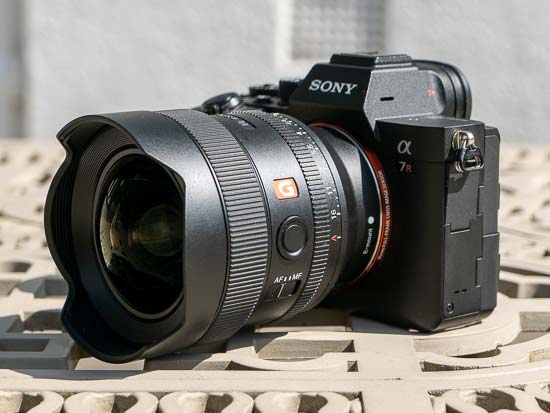
Build quality is excellent, certainly up to the standard of the rest of the flagship GM lens range. The Sony FE 14mm F1.8 GM has a sealed dust and moisture resistant design, although Sony stop short of saying that it’s 100% weather-proof.
The Sony FE 14mm F1.8 GM lens has a metal lens mount. It accepts standard sheet-type filters for ND, colour correction and soft filters via a rear filter holder, with a cutting template included in the box.

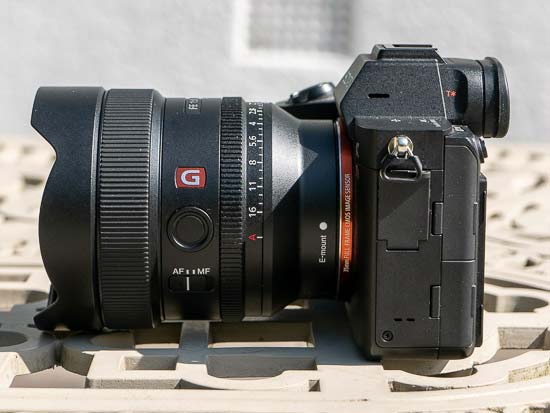
The lens has a fairly wide, ridged focus ring. Manual focusing is possible by using the focus mode switch to toggle between AF and MF.
There are no hard stops at either end of the range, making it a little more difficult to set focus at infinity.
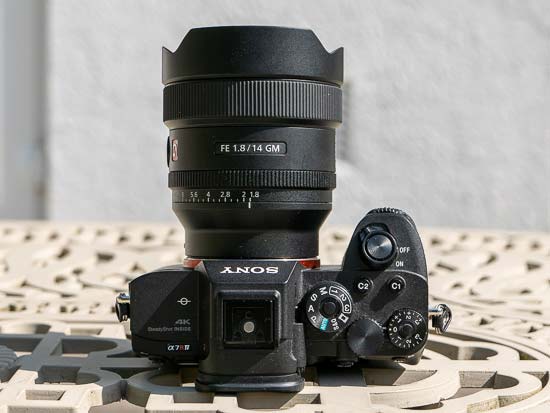
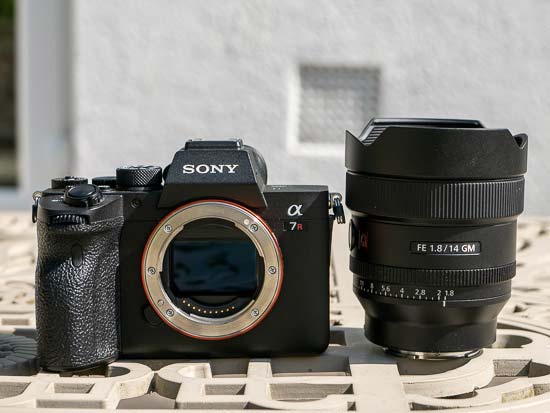
The lens utilizes not one, but two XD Linear Motors to provide quiet and smooth auto-focusing, making it very well-suited to shooting video, with the overall lens length remaining constant during focusing thanks to an internal design.
When it comes to auto-focusing, the Sony FE 14mm F1.8 GM proved to be an almost silent, very quick performer on the Sony A7R IV camera that we tested it with. We didn’t experience very much “hunting”, either in good or bad light, with the lens accurately focusing almost all of the time.
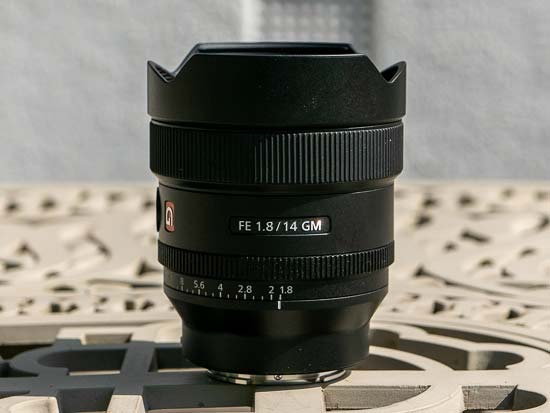
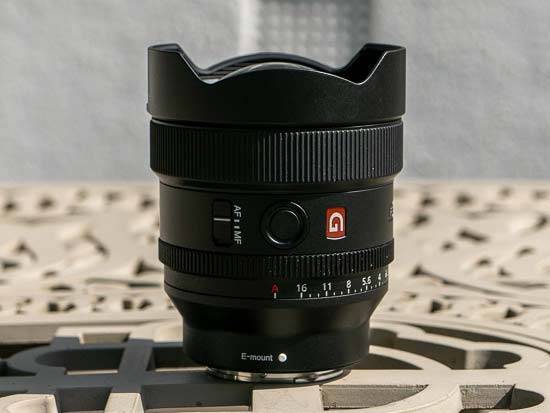
Sony’s near flawless Eye AF worked perfectly with this lens, quickly locking onto and tracking the subject’s eye despite the ultra-wide-angle of view.
The Sony FE 14mm F1.8 GM lens features an aperture ring that has 1/3EV stops ranging from f/1.8 to f/16 and an Auto setting.
The Click switch on the bottom-right of the lens barrel lets you select whether the aperture ring clicks into place at each aperture stop or rotates smoothly for silent operation during movie recording.
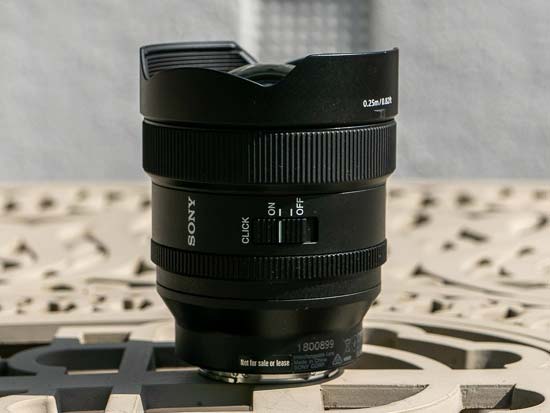
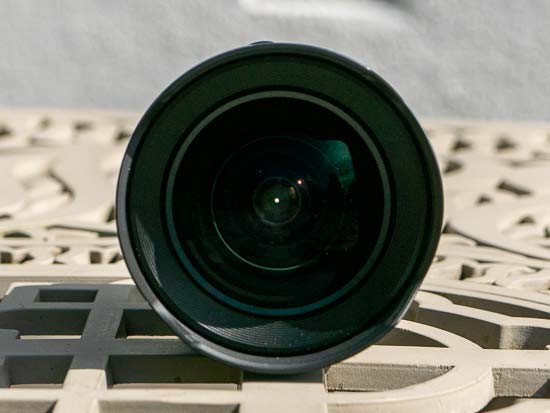
The lens also has a customisable focus hold button which keeps the lens locked to the current focusing distance, useful if you’re auto-focusing and don’t want the lens to try and find focus again. It can also, amongst other things, be usefully set to Eye AF.
The lens doesn’t feature built-in optical image stabilisation, relying instead on the camera body’s stabilisation system.
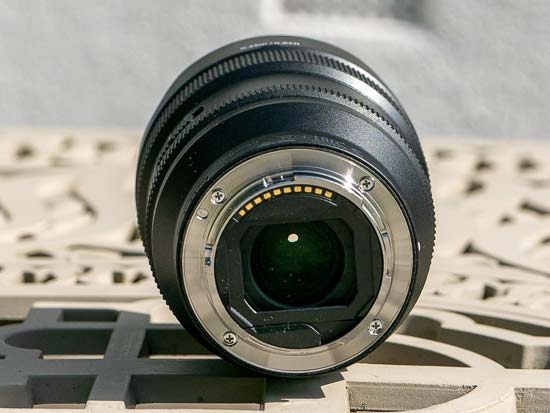
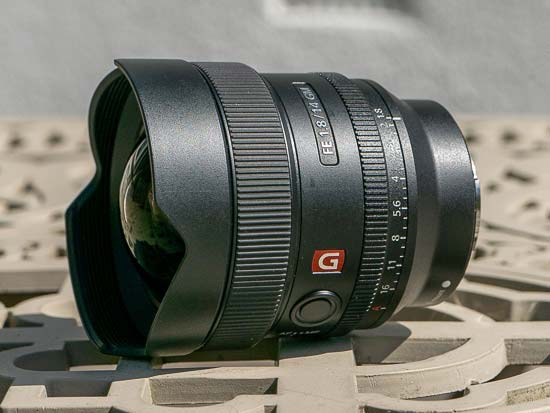
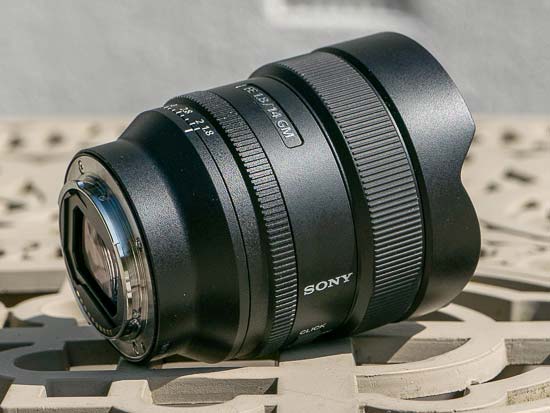
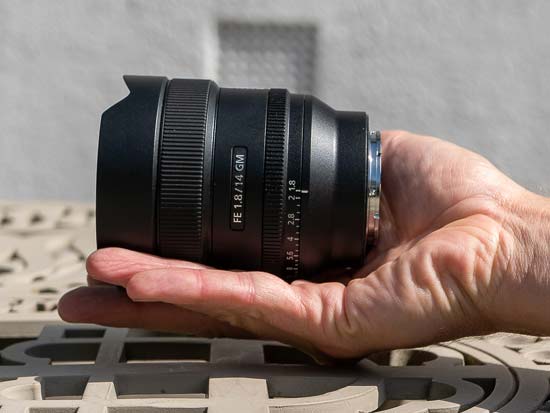
The Sony FE 14mm F1.8 GM lens is commendably supplied with both a soft case and a non-removable, good quality plastic petal-shaped lens hood that’s integrated into the design of the lens.
Focal Range
The 14mm focal length provides an angle of view of 114 degrees.

Chromatic Aberrations
Chromatic aberrations, typically seen as blue or purple fringes along contrasty edges, were not really apparent in our test shots, only appearing in very high contrast areas.
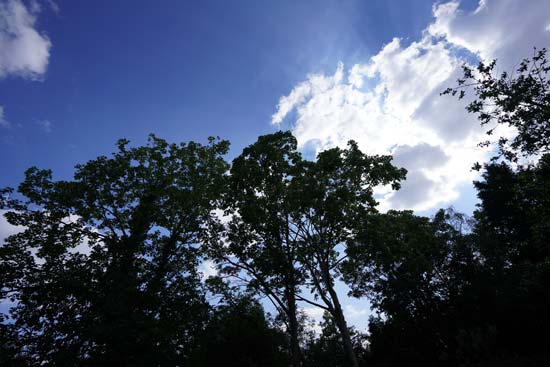
Distortion
Barrel distortion is very well controlled for such a wide-angle lens, commendably for both JPEG and Raw files.

Light Fall-off
With the lens set to its maximum aperture of F1.8, there is some noticeable light fall-off in the corners, requiring you to stop down by at least 3 f-stops to completely prevent it.

Macro
The Sony FE 14mm F1.8 GM certainly isn’t claimed to be a macro lens, but you can at least get pretty close to your subject thanks to a minimum focusing distance of 25cm / 9.8in, with a maximum magnification of 0.1x.



Sunstars and Flare
The Sony FE 14mm F1.8 GM produces very nice sunstars when stopped-down to f/16, as shown below.
The lens is quite susceptible to flare when shooting directly into the sun, though, despite the built-in lens hood.
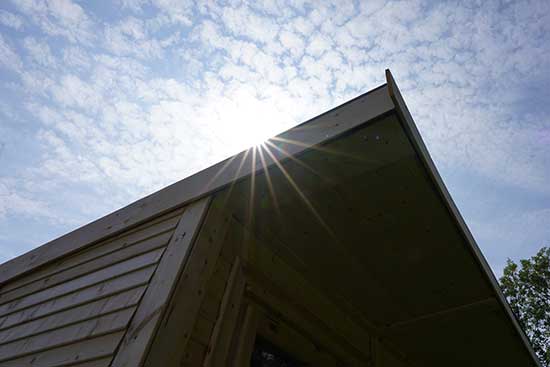
Bokeh
Bokeh is a word used for the out-of-focus areas of a photograph, and is usually described in qualitative terms, such as smooth / creamy / harsh etc.
In the FE 14mm F1.8 GM lens, Sony have employed an iris diaphragm with 9 rounded blades, which has resulted in appealing bokeh for such a wide-angle lens.
We do realise, however, that bokeh evaluation is subjective, so we’ve included several examples for your perusal.



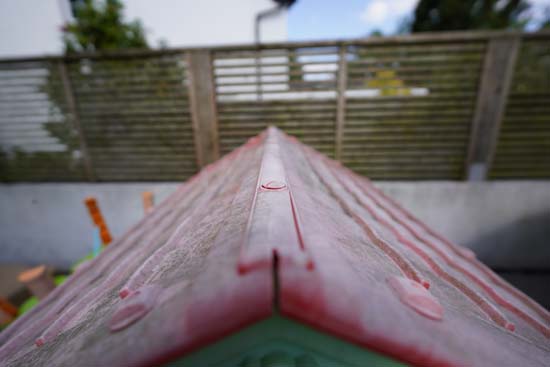

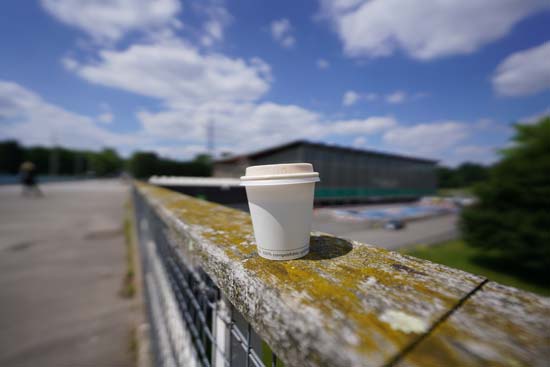
Sharpness
In order to show you how sharp this lens is, we are providing 100% crops on the following page.

